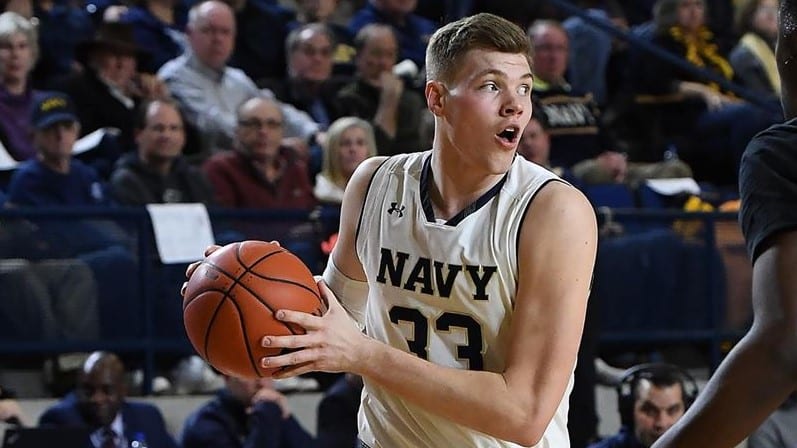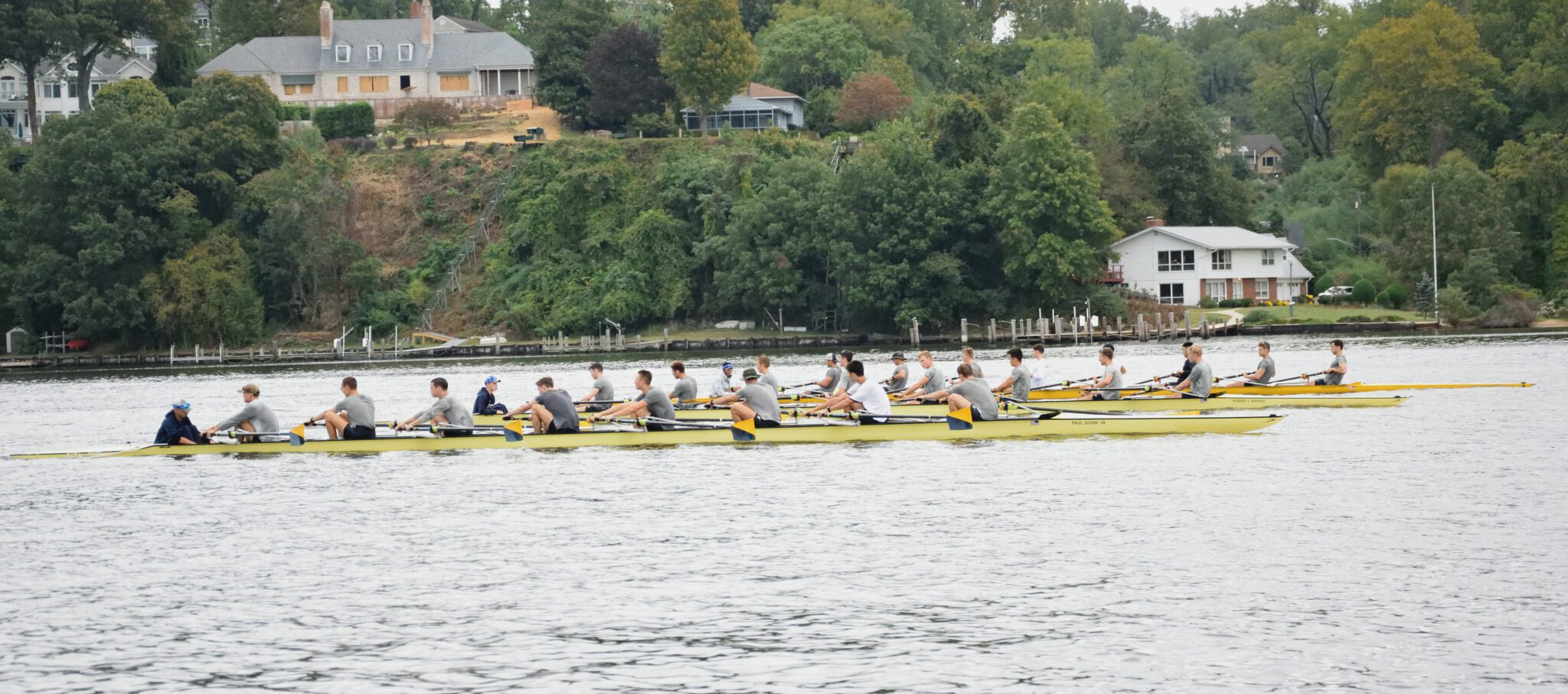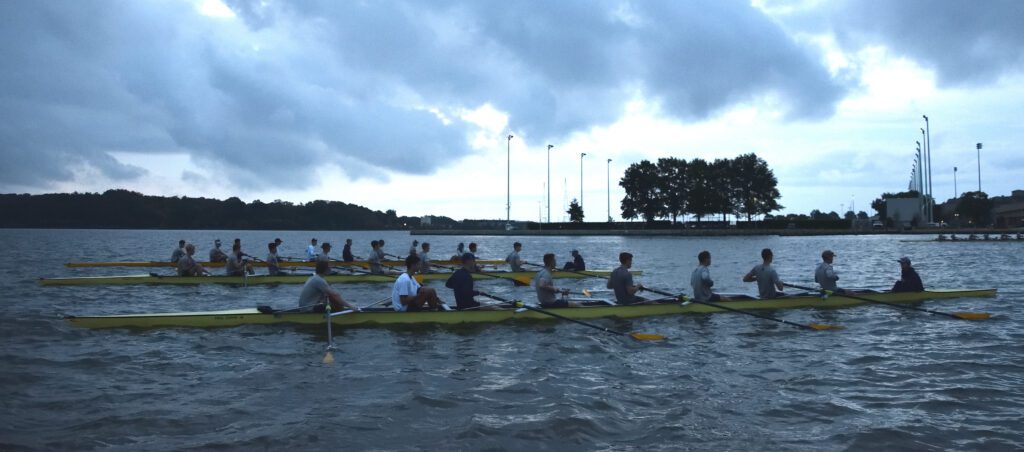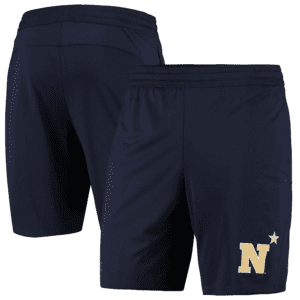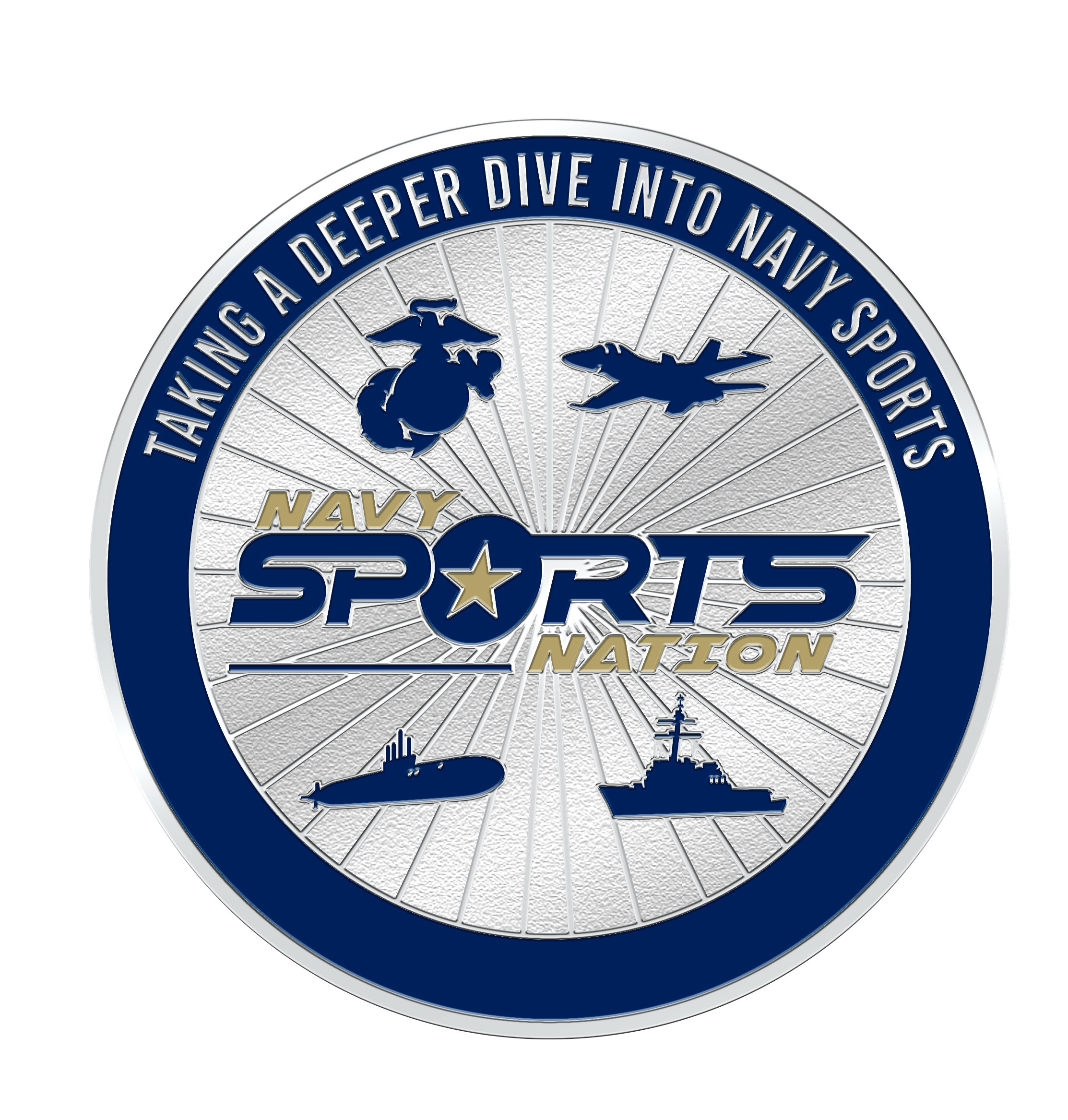National Champions Again: Catching Up With The Navy Lightweight Rowing Team
This past May, the Navy Lightweight Rowing team won its first national championship since 2004. And just a couple months ago, head coach Shawn Bagnall joined me on the Navy Sports Central podcast to talk about that great run. As we finished our conversation, it occurred to me that it would be really interesting to watch the team train. And when I mentioned to Coach Bagnall that I would be in Annapolis over the three day weekend in October, he was nice enough to invite me for a tour.
Naturally, I took him up on it. And I’m glad I did. That time I spent at Hubbard Hall learning more about the Navy Rowing program was the high point of my trip. So in this feature, I’d like to take you through what I experienced . . . because it definitely did not disappoint.
Back At The Boat House
The last time I recall being inside Hubbard Hall was during my Plebe Summer. All incoming classes got a presentation on the rowing program. All these years later, it didn’t look that different from the outside. But inside, it was another story. I’ll get to that a little later.
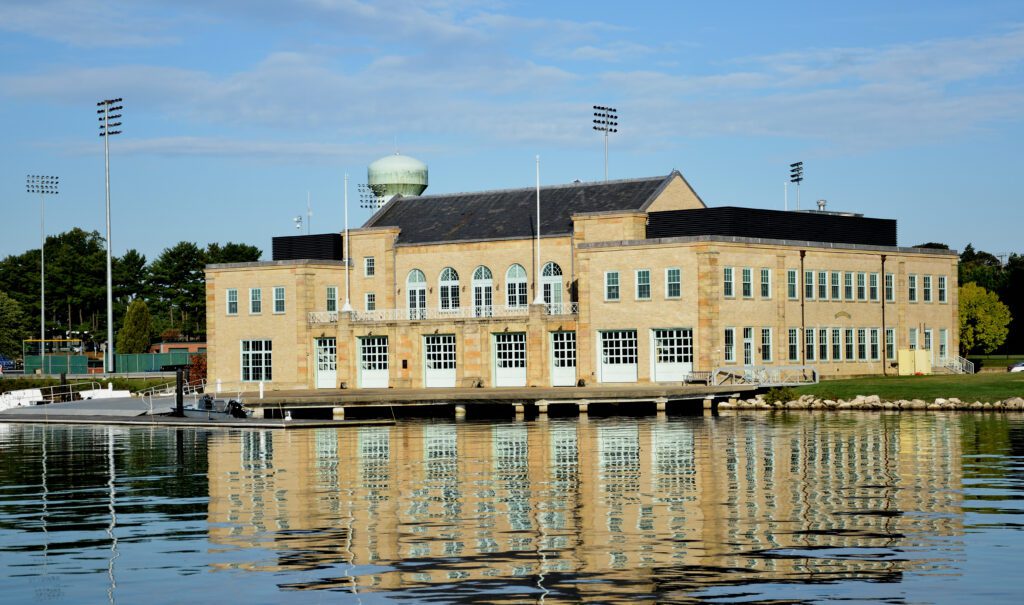
We began our tour in the shell bays, named in honor of Coach Rick Clothier. He led the Navy Rowing program for nearly 40 years from 1974 – 2012. He had a career coaching record of 203-97-2, but that’s only part of the story.
During his time at Annapolis, Coach Clothier’s teams won 7 Ten Eyck trophies at the IRAs (overall team national champions). Additionally, his crews took 3 Varsity Challenge Cups (1V8 national champions) and 5 Kennedy Trophy Cups (2V8 national champions). In all, he won 28 championships in his 32 IRA appearances.
Coach Clothier also led the Mids to four straight gold medals at the Head of the Charles Regatta. No team had ever accomplished that feat at this premier international rowing event held in Boston.
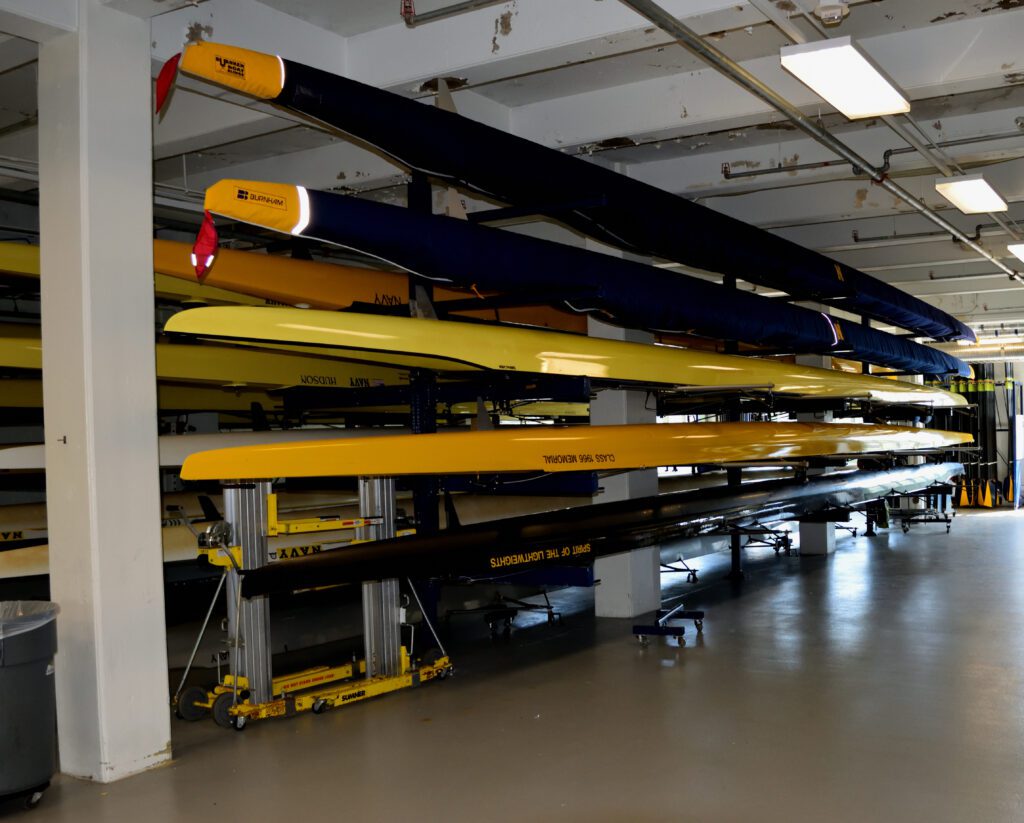
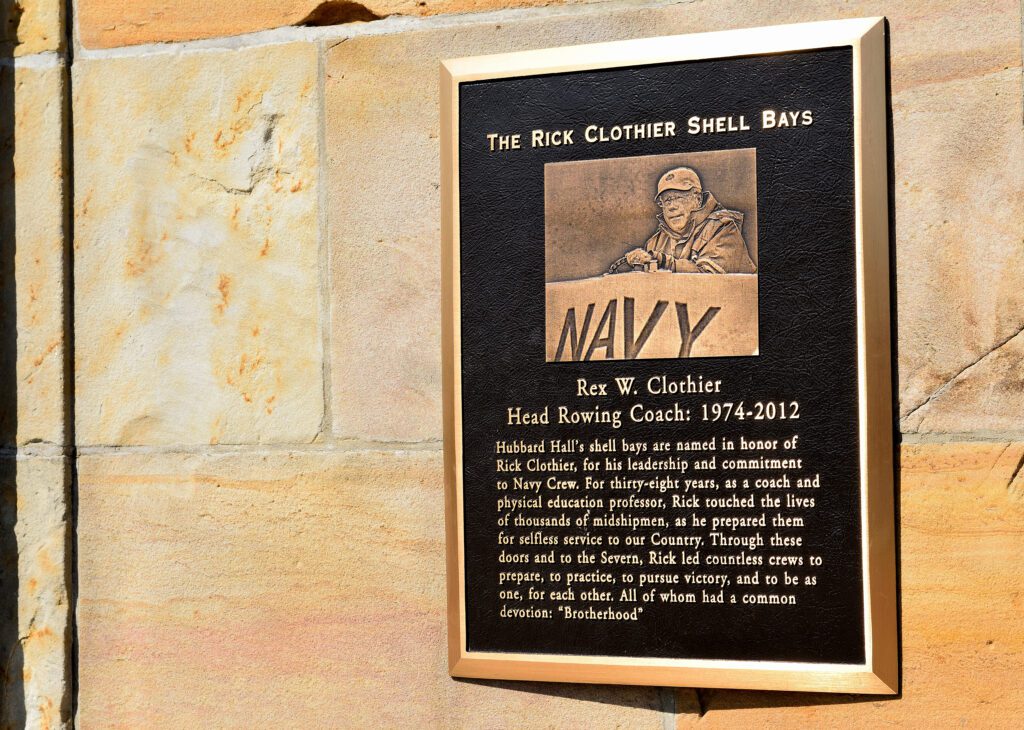
Finally, Clothier trained 30 rowers who went on to make the U.S. National Team. These athletes later competed in the World Rowing Championships, the Olympics, and the Pan Am Games. In fact, he coached the 1975 and 1983 U.S. Rowing team at the Pan Am Games as well as the 1987 World University games.
Surrounded By History
So from the minute you walk into the shell bays, you get the sense that this is no ordinary boat house. They bear the name of a coach who left an indelible mark on the Navy Rowing program. And I’ve got to believe that the athletes coming through here intent on making the team do not take that lightly.
Here’s another cool thing worth noting. Some of the shells carry the names of graduates. Specific protocols explain how to achieve that status. But it’s pretty awesome to see past rowers who’ve meant so much to the program get that kind of recognition.
I did ask if Overlord was somewhere among all those shells. The U.S. Armed Forces team represented by a mixed crew from the Navy heavyweight, lightweight and women’s teams used it to win the King’s Cup in 2019 at the Henley Royal Regatta. They beat the German Armed Forces by three quarters of a boat length. But it turns out that Overlord stayed in England. Hopefully, it’s on display somewhere.
The Hubbard Hall wardroom also has a historical feel to it. Trophy cases displaying all the hardware won by teams over the years literally surround it. Coach Bagnall said that the teams use the wardroom as a place where they can study. And it doesn’t hurt to have a spot like that to decompress far away from Bancroft Hall either.

Navy Lightweight Rowing Honors
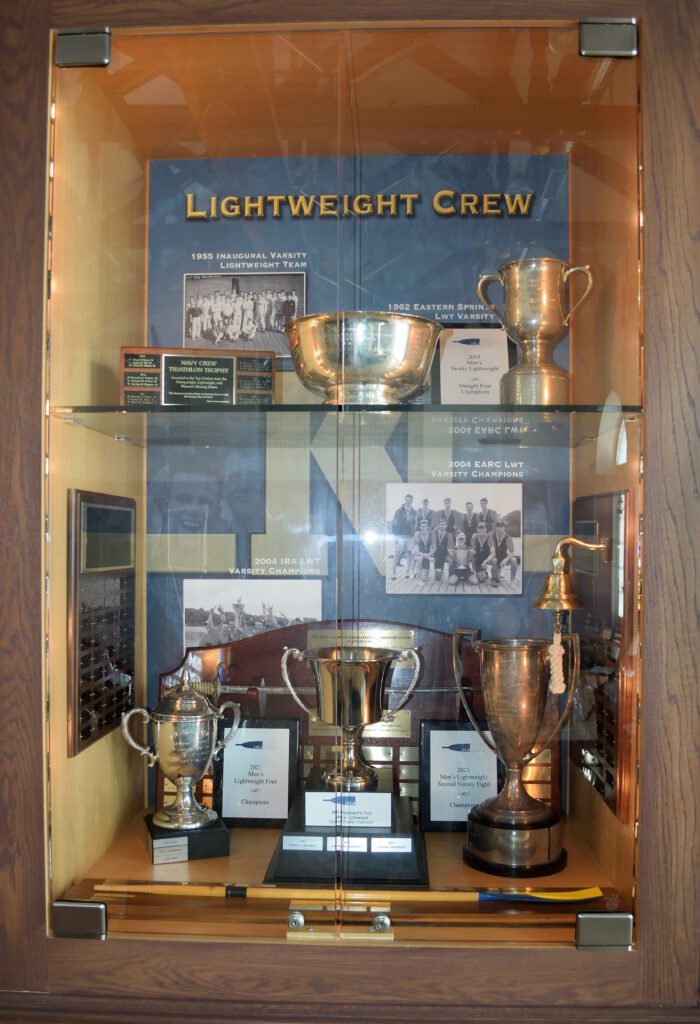
You can see from the photo to the right that the Navy Lightweight Rowing team is very accomplished. The photo at the top left is the 1955 team. Just below that, there is a plaque noting the top finishers from the heavyweight, lightweight and women’s teams in their annual Hubbard Hall Triathlon.
That huge cup in the middle of the top shelf is the National Championship trophy the Lightweight team won in 1922. And the one to the right is the Forester Cup, which the Mids earned for their win over Georgetown in their 2019 dual race.
The bottom shelf contains the Healy Cup on the left. That is given to the winning Varsity Fours boat (without coxswain) at the IRAs.
The two photos (one partially obscured) are of the Lightweight crews that won both the IRA and Eastern Sprints Championships in 2004.
The President’s Cup in the middle goes to the overall IRA points champion. The Mids earned this one in 2021 because they swept all three championship races (1V8, 2V8, and 1V4). The plaques to the left and right of the President’s Cup are for the 1V4 and 2V8 national championships that same year.
And finally, the trophy on the right is the Kilpatrick Cup, which is awarded to the winning 3V8 crew at the Eastern Sprint Championships. The Mids last won that in 2019. So as you can see, these Lightweight crews are no strangers to championships.
The Rowing Tank
When I was at the Academy, I saw both the Heavyweight and Lightweight Rowing teams as well as the Women’s team out on the water in all kinds of conditions. They also had rowing tank inside the Boat House.
In fact, Coach Bagnall told me that there has always been a way for their rowers to practice technique on the water without going outside. When Hubbard Hall was first built, there was an area that was open to College Creek (I knew it as Dorsey Creek when I was getting grilled on my Yard knowledge during Plebe Summer) where they had a stationary boat. It was sheltered, but the athletes were still technically on the water. So that gave them some accurate feedback when they practiced their stroke.
When I got to the Academy, a weight room stood in that space. But there was a rowing tank on the opposite side of the building. Then in 2012, the Boat House underwent a big renovation, and the tank was moved back to the space previously occupied by the stationary boat that was open to the creek.
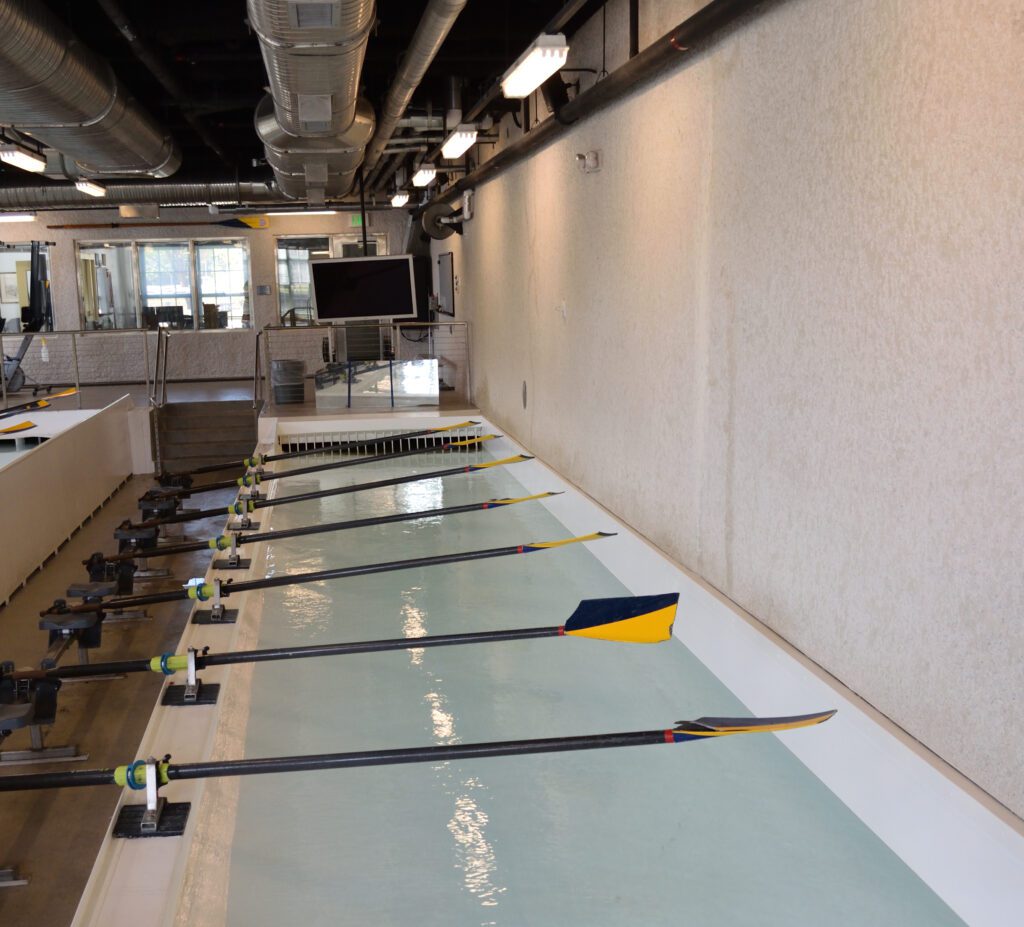
The Rowing Tank is dedicated to the Navy Heavyweight Crew from 1952; otherwise known as “The Great Eight”. As a team, they compiled record that represents the gold standard for the Navy Rowing program . . . actually any collegiate program, for that matter.
Check out this resume:
- Winners of 29 consecutive races. They never lost from 1952-’54. No crew has ever matched that accomplishment.
- Gold medalists at the ’52 Olympic Games in Helsinki, Finland.
- Three IRA National Championships.
- Three Eastern Sprint Championships.
- 1954 Western Sprint Champions.
It doesn’t get any better than that . . .
Ergs, Ergs, Everywhere
Without a doubt, the rowing machines throughout the Boat House far outnumber every other piece of training gear. The technical name for them is rowing ergometer machines. A fan creates resistance and the ergometer captures the expended energy.
Concept 2 is the company that makes the rowing machines used at the Boat House. They’re called “ergs” for short.
The ergs make up a core component of every rowers training. Coach Bagnall described one training regimen involving them that is not a favorite with the athletes. But they know that it will ultimately benefit them.
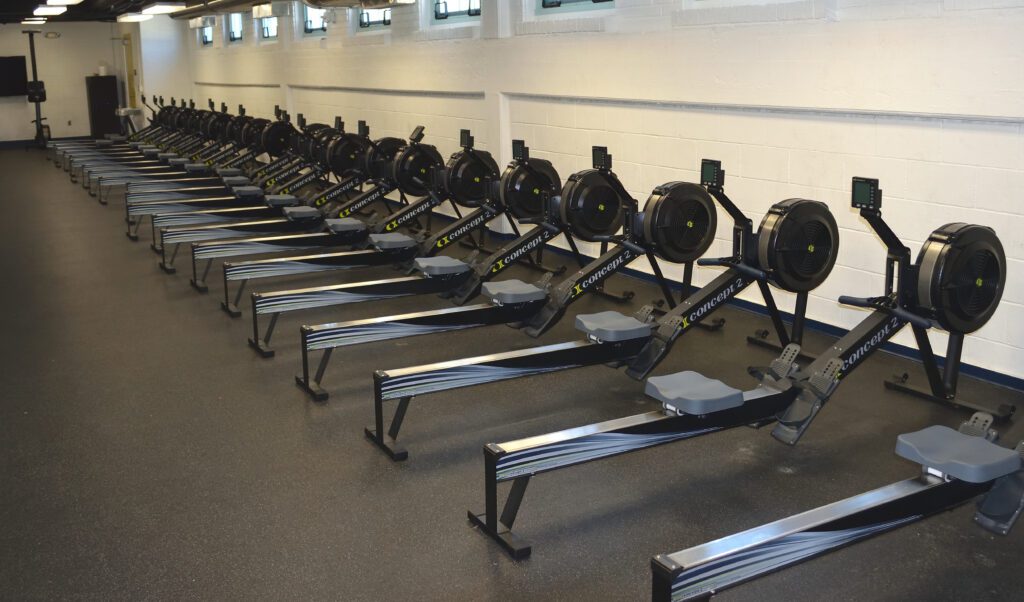
He explained for a few weeks during the winter, they perform a specific routine on Tuesdays and Fridays. They were designated as “Third Deck Days” because the training regimen took place on the third floor of the Boat House.
In this routine, the amount of work done is twice as much as what the athletes would do in a race. The goal is to go at maximum exertion for a certain period of time. The rest interval is twice as long as the work interval. Then over time, the work interval length increases. The objective is for the rowers to train themselves to maintain sound technique and make good decisions while they are performing that their physical limits.
Now, think about how hard it is to concentrate when you are tired. This goes way beyond that. During this training routine, you’re operating right on the edge of complete physical exhaustion. And the expectation is to power through and continue rowing in concert with your crew. It’s a grueling routine, but it gets results.
A Typical Practice Week
Now we know that “Third Deck Days” don’t exactly rank high on rowing team’s list of favorite routines. And clearly, the ergs play an important role in creating winning crews.
But Coach Bagnall will be the first one to tell you that “ergs don’t float”. At the end of the day, it all comes down to how well these athletes row with each other. So with that in mind, he provided a little insight on what the Lightweight Rowing team is doing right now with respect to practice.
The Routine
There are two practices a day on Mondays, Wednesdays, and Thursdays. The team has strength training on Monday and Wednesday mornings at the Wesley A. Brown Field House at 0600 (0550 show time to warm up). This is makes sense because it’s right next to Bancroft Hall’s 7th Wing. That makes it much easier for the team to finish their workout and get back in time to prepare for morning formation.
On Thursday mornings and Sundays, the athletes train on their own. That most likely means a run of a specified distance. Sundays in general are treated as off days.
The team is on the water on Monday through Friday afternoons (1545) and Saturday mornings (0700). That’s where everything comes together.
During our podcast episode, Coach Bagnall described the erg score as being the athlete’s resume. A good score for 2,000 or 5,000 meters gets them the seat race. That’s basically the formal interview. If they do well there, they get the job and are placed in the first second or third boat based on their overall performance.
Training Objectives
Coach Bagnall also shared the focus of each day from a training perspective. I’ll say right now that there is absolutely no chance that I can paraphrase what he said and still have it land with the same impact. So I’m just going to quote him directly here. The following words are his.
“Depending on the training focus of each day, there may be more or less technical coaching involved in the practice. Some days, both on the water and in the boathouse (on the ergs), will just be plain hard work. We will often throw in some small technical reminders while they are working hard. But it’s not enough to distract from the task at hand: pushing themselves and improving their physiology.”
Lower Intensity Days
“On the days where the intensity is down a bit, we will incorporate some ‘drill work’ which will allow us to isolate different parts of either 1) The drive sequence, or 2) the recovery sequence of the rowing stroke. This drilling can come in a multitude of ways . . . pausing in-between strokes, or segmenting/isolating a small part of the stroke and repeating that particular segment.”
“We also practice breaking up the stroke and/or shortening (fractional slide rowing) the stroke to work on different aspects of what they are doing when the boat is at full speed/tilt. This often requires more focus and attention, as they actually have to think about what they are doing, not just ‘do it’.”
“Usually, the drill work is done in concert with some lower rate, steady-state rows, but not always. Often the best way to work on something is to do it at full-speed, to ensure that the small parts of what they are doing becomes a habit. Our racing takes place when the athletes go to more of a “primitive brain” space (very fight or flight), under great amounts of lactic acid and stress going 100% effort. So it’s a bit like the Bruce Lee principle of ‘I fear not the man who has practiced 10,000 kicks once, but I fear the man who has practiced one kick 10,000 times’. We get our athletes to replicate the best version of the stroke so they don’t have to ‘think’ about it when they are in the thick of a race .”
I have to say that I really like the Bruce Lee reference. It is right on the mark when it comes to rowing. That’s for sure.
On The Water
After we finished up the tour, I figured I had what I needed. So I was packing up my camera and just making conversation. That’s when Coach Bagnall referenced the Saturday morning practice.
This got my attention really quickly because it occurred to me that the one thing I was missing was some photos of the team practicing on the water. So I asked him where would be the best place to stand onshore to take pictures as the team was going out and coming back.
I was not expecting what came next. Coach Bagnall asked if I would like to come out on the boat with him to take photographs. And I’m telling you, I couldn’t get the “YES” out of my mouth fast enough.
Dawn Patrol
I got to the Boat House at about ten minutes to seven the next morning just as the team was getting the shells in the water. It was overcast, but there was no rain predicted. So I unpacked my Nikon and fitted it with one of my favorite lenses for taking photos in those conditions.
Then I just began taking pictures in short bursts. Sunrise in Annapolis that day was at 7:10 AM, so I literally started at the crack of dawn.
The Navy Lightweight Rowing team heads out onto the Severn, this photo was literally taken a couple minutes after official sunrise. This was the actual lighting.
It’s All in the Details
Here is where I really got an appreciation for Coach Bagnall’s eye for the details. As he maneuvered the boat back and forth among the three shells, he provided steady feedback to the athletes on their technique through a megaphone.
He keyed on things like back, shoulder and chest position. He also looked at when the blade coming out of the water. Who was coming out early? Who was coming out late?
The basic rowing stroke sequence is Catch, Drive, Finish, and Recovery. Every piece of the athlete’s stroke is dissected during these practices on the water so that any inefficiencies can be caught and corrected.
At the same time, Coach Bagnall has to keep all three boats clear of other traffic. He deals with everything from kayak fishermen right on up to 30 foot pleasure craft. So his head is constantly on a swivel looking to see where he needs to direct his crews next. Sometimes, they would just stop to let the bigger waves coming off the wake of a large boat go by.
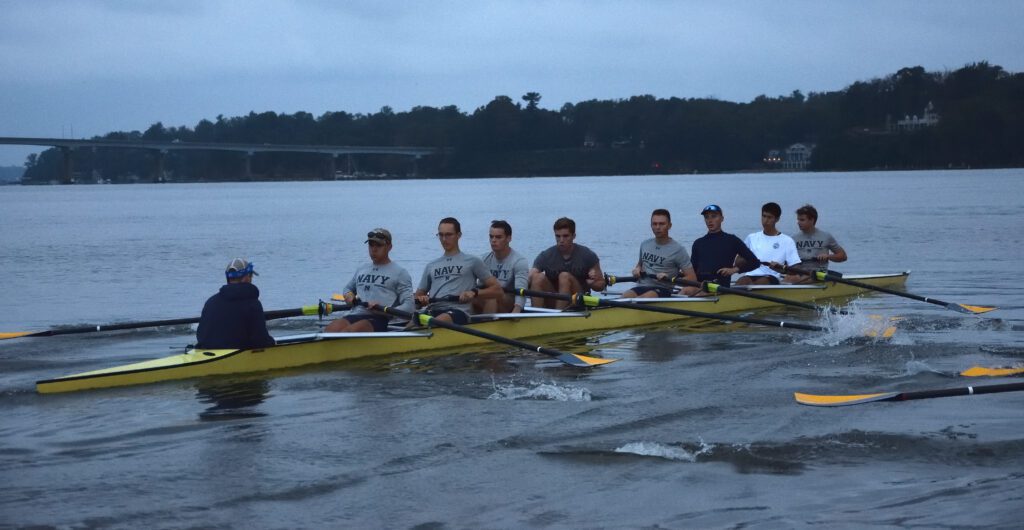
As we got further into the practice, the intensity increased. The crews would row hard for 45 seconds starting at 26 strokes per minute, monitored by the coxswains. Then they would recover for 90 seconds. They eventually worked their way up to 32 strokes per minute. The team performed a set number of intervals. I didn’t keep track of how many they did. But based on the look on these guys faces toward the end of practice, I’d say they were fine with not having to do any more. Take a look at these next two shots.
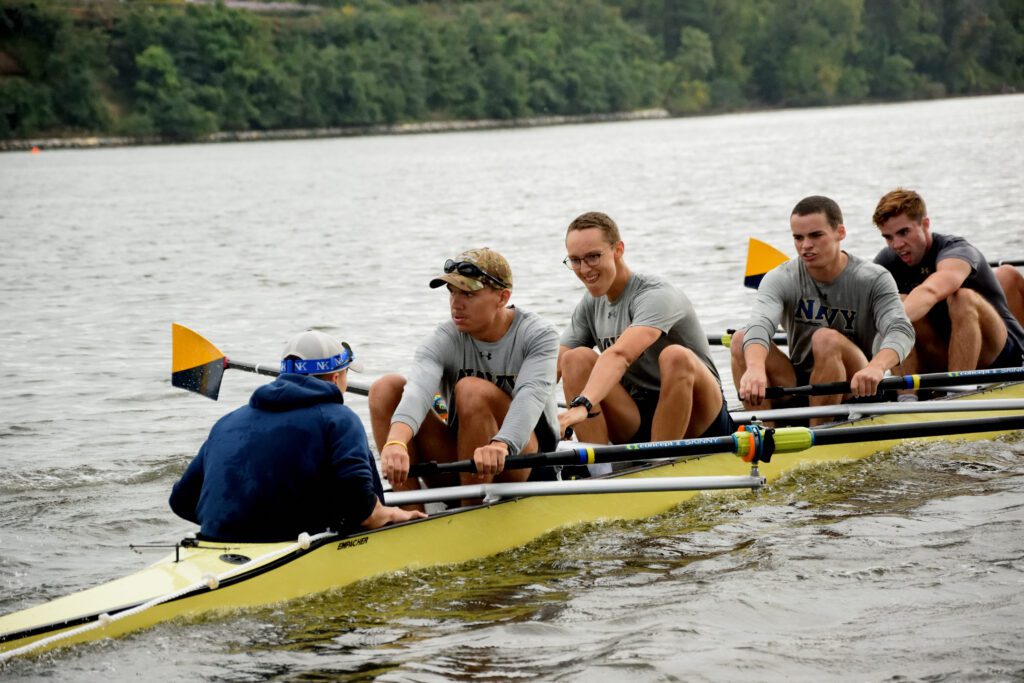
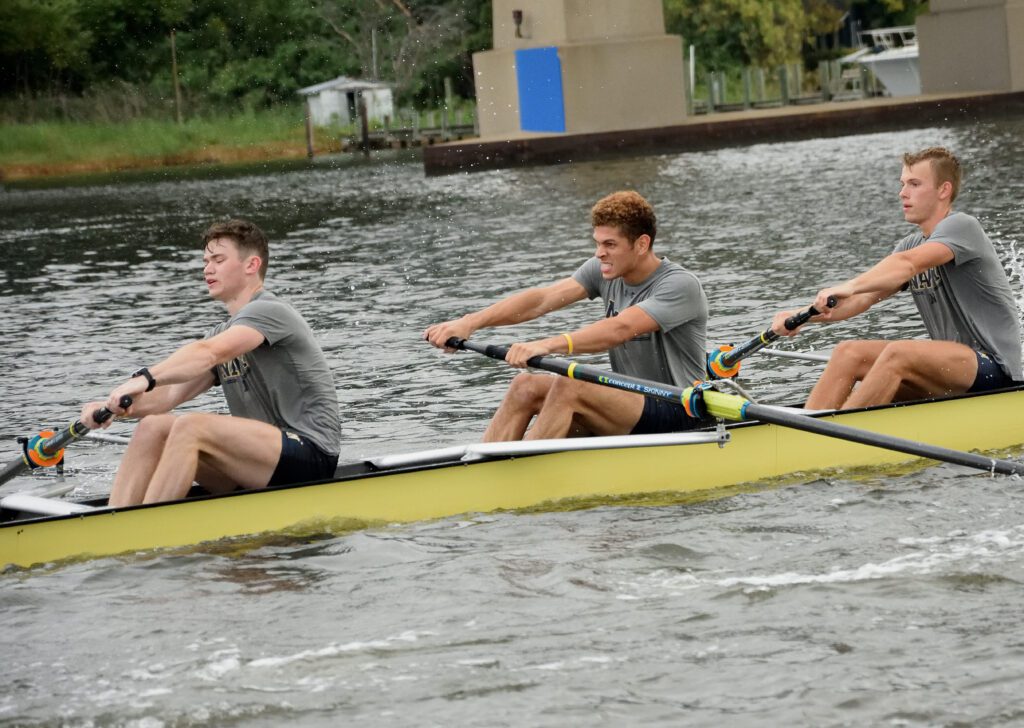
While the Heavyweights have no specific restrictions, members of the Navy Lightweight rowing team are limited to 178 pounds.
Winding Down
Somewhere around 9:00 AM, the crews arrived back at Hospital Point and made the turn into College Creek. They were into the warm down period, but Coach Bagnall was still checking their stroke technique all the way in. After returning to the Boat House they washed and detailed the shells. The team then stored them until they returned on Monday afternoon.
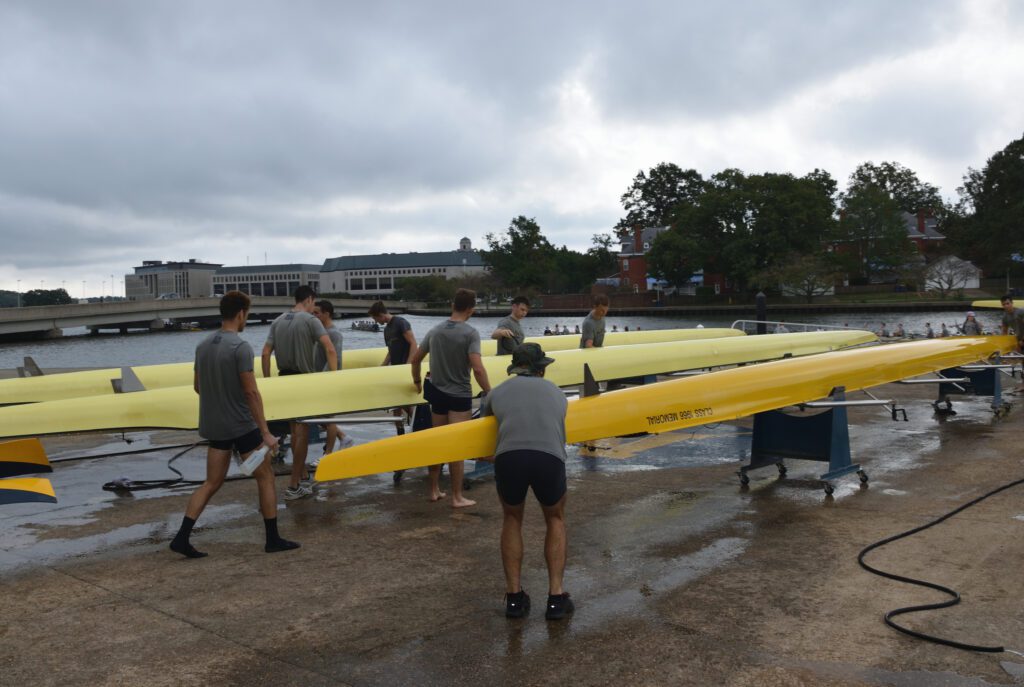
The Navy Lightweight Rowing team details the crew shells after practice.
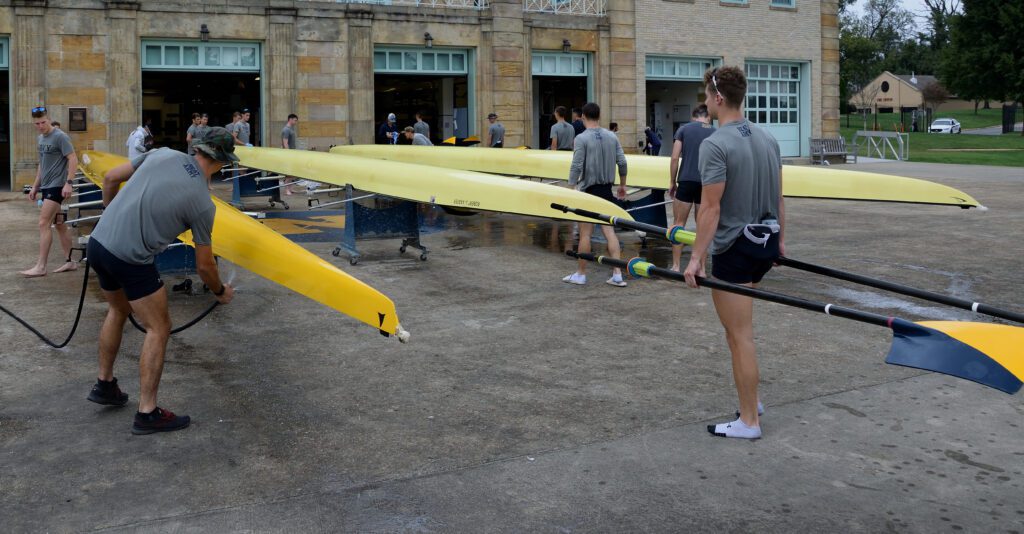
That brought my visit with the Navy Lightweight Rowing team to an end. And I will tell you that it’s one I’ll always remember. It was more than enough to get that tour of Hubbard Hall and learn more about what goes into training these athletes. But being able to spend that time out on the water and seeing everything put into practice was an unexpected bonus. So, my sincere thanks goes out to Coach Bagnall for granting me that kind of access.
Final Thoughts
I remember when we spoke in August on the podcast, I asked Coach Bagnall what specific thing attracted him to the head coaching job at Annapolis. He shared that having competed against Navy while coaching at Syracuse, he felt that there was a certain mystique to the program.

He went further to say that this feeling was not uncommon among other athletes and coaches who rowed against the Mids. They believed there was something different, even special about the Navy Rowing program. And from my tour of Hubbard Hall as well as watching the team practice, I got that same feeling.
I walked through the Boat House where Olympic champions from the Naval Academy trained. I learned about all the coaches and athletes who’ve had an impact on the program. And I saw trophies won in competition that go back 100 years. For someone who as big a fan of history as I am, it’s hard not to be affected by something like that.
There are 36 different varsity sports at Annapolis. But none of them have been around longer than Navy Rowing. Two years ago marked the program’s 150th anniversary.
It was a great time to celebrate its past. And based on the terrific experience I had with the Navy Lightweight Rowing team, I have to say that I’m feeling pretty good about its future.
Until next time . . .
Thank you Navy Sports!
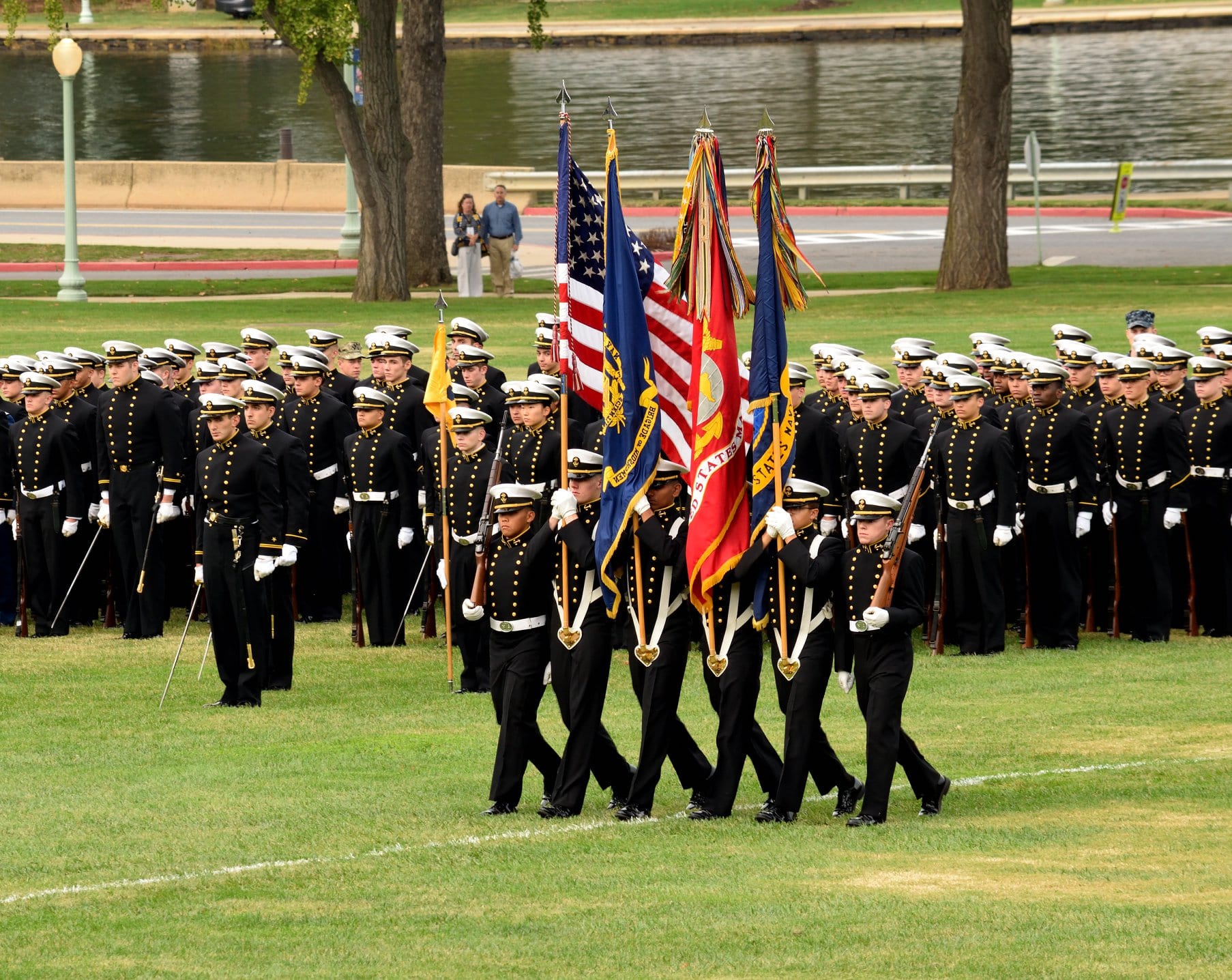
My sincere thanks to Scott Strasemeier, Senior Associate AD for Sports Information at the U.S. Naval Academy for granting permission to use images and video from the Navy Athletics media library. All photos used from this source will be properly credited in the caption. The only exception would be if the photo is used as a feature image where no caption is visible.
Follow Us
Share this story!
Related Links
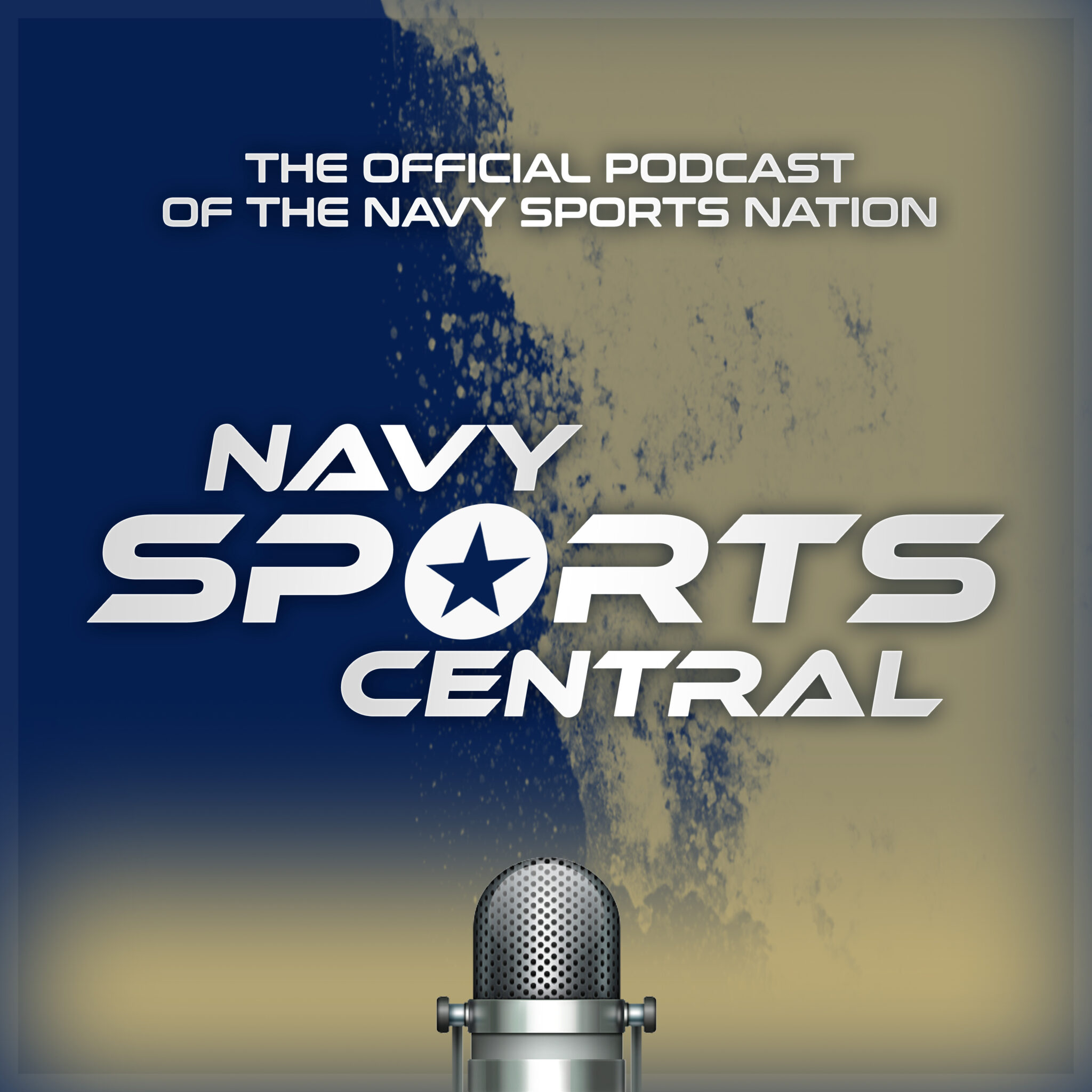
Shop for Merchandise
Featured Products
As an affiliate partner, Fanatics shares a small percentage of each sale through these links with the Navy Sports Nation which will be used to maintain the website. Thanks for your support!
Did you know…
Navy and St.Mary’s are the only two rugby programs in the country that have produced two Rudy Scholz Award winners. The award for the collegiate rugby player of the year was first given out in 2016.
Connor McNerney was the Naval Academy’s first recipient in 2018. This year, Lewis Gray earned that honor. It was a fitting end to his outstanding career.
Favorite Books
Click on the images to buy these two “must have” books for all Navy football fans. As an Amazon associate, I earn from qualifying purchases.
cRA Div. 1 National Championship Highlights
Karl Darden
I am a Navy veteran and a graduate of the U.S. Naval Academy. The idea to start this blog actually came from my classmates. I hope you enjoy reading this content as much as I enjoy writing it. Go Navy!! Beat Army!!
